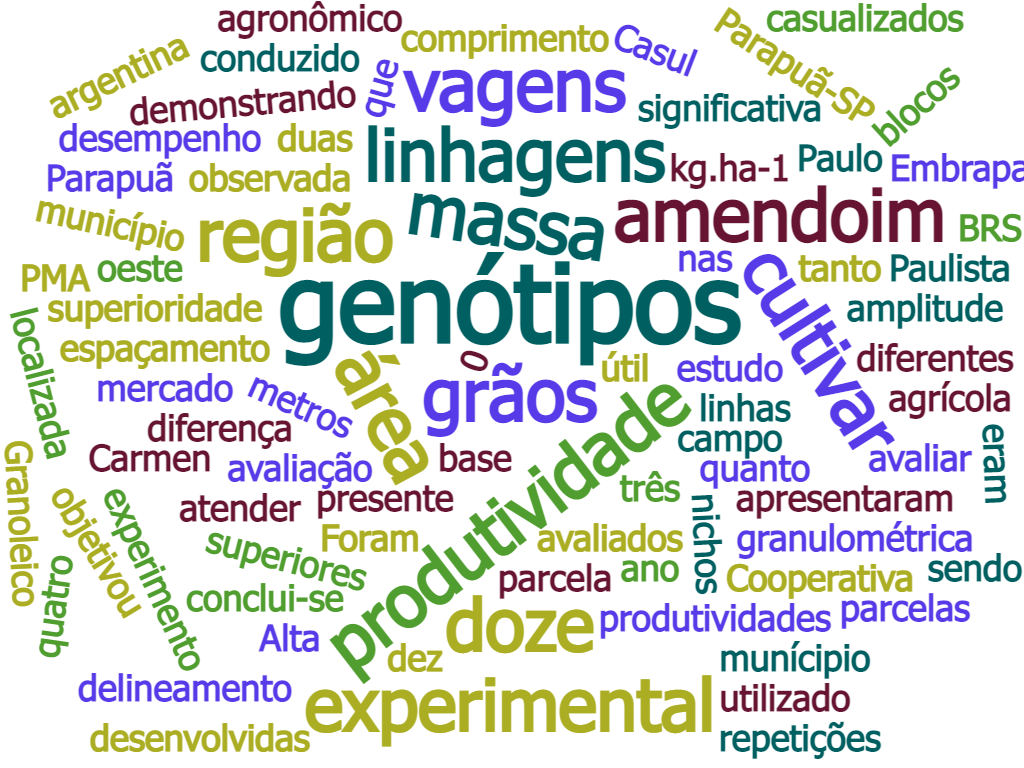Agronomic performance of new peanut lines in the Alta Paulista region at the time of planting opening
DOI:
https://doi.org/10.52755/sas.v2iedesp1.133Keywords:
Arachis hypogaea L., Improvement Program, ProductivityAbstract
This study aimed to evaluate the agronomic performance of twelve peanut genotypes, in the Alta Paulista region, municipality of Parapuã, in the state of São Paulo. The experiment was carried out in the experimental area of "‹"‹Cooperativa Casul, located in the western region of the
state, in the municipality of Parapuã-SP, in the agricultural year 2020/21. The experimental design used was in randomized blocks, with four replications. The treatments consisted of twelve peanut genotypes, ten strains (1253 OL, 2010 OL, 1876 OL, 2133 OL, 2110 OL, 2131 OL, 2101 OL, 2056 OL, 2136 OL and 2250 OL) and a cultivar (BRS 423 OL) developed by Embrapa's PMA, and an Argentine cultivar by El Carmen (Granoleico). The plots consisted of two lines three meters long, with a spacing of 0.90 m and a useful area for evaluation of 5.4 m2 per plot. Mass of 100 grains and pod yield were evaluated. Based on the present field study, it is concluded that the genotypes showed a significant difference both in the mass of 100 grains, demonstrating granulometric amplitude to meet the different market niches, and in the productivity of pods with superiority observed in the 2010 OL strains, 1876 OL and 2133 OL, with yields greater than 6,800 kg.ha-1.
Downloads

Downloads
Published
How to Cite
Issue
Section
License
Copyright (c) 2021 Diego Dias Zammataro, Jair Heuert, Taís de Moraes Falleiro Suassuna, Vanessa Biazotto, Victor Hugo Lanças Zammataro, Welliton Leoti Zanetti

This work is licensed under a Creative Commons Attribution-NonCommercial-ShareAlike 4.0 International License.
Autores concordam com os seguintes termos:
a) Os autores mantêm os direitos autorais e concedem à revista o direito de primeira publicação, com o trabalho simultaneamente licenciado sob a LicençaAttribution-NonCommercial-ShareAlike 4.0 International, que permite o compartilhamento do trabalho com reconhecimento da autoria e publicação inicial na Revista SAS. A licença permite o uso, a distribuição e a reprodução irrestrita, em qualquer meio, desde que devidamente citada a fonte. Essa licença permite também que outros remixem, adaptem e criem a partir do seu trabalho para fins não comerciais, desde que atribuam a você o devido crédito e que licenciem as novas criações sob termos idênticos.
b) Não cabe aos autores compensação financeira a qualquer título, por artigos ou resenhas publicados na South American Sciences.
c) Os conceitos expressos nos artigos publicados na South American Sciences são de inteira responsabilidade de seus autores.








